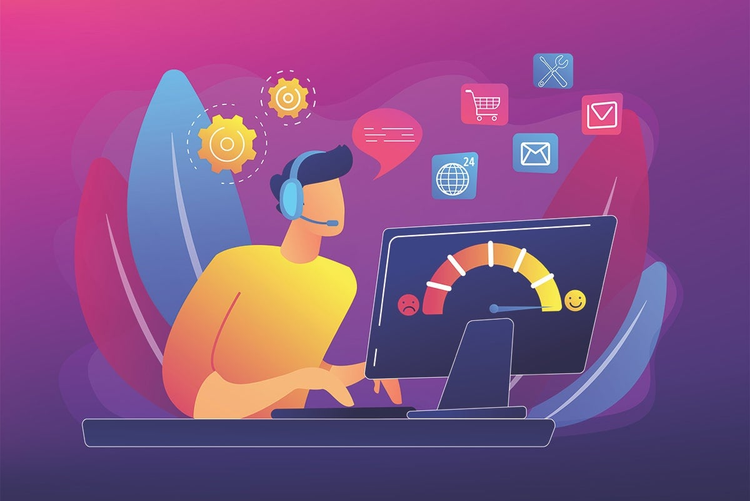CMO’s Notebook: Dig These Five Takeaways From DIG SOUTH
Charleston, S.C.’s tech credentials are on a rapid rise. So little surprise the city played host to DIG SOUTH, designed to showcase and elevate the region’s digital economy.

Charleston, S.C.’s tech credentials are on a rapid rise. The city has a larger percentage of IT-related employment than Austin, its tech economy is growing 26% faster than the national average, and Brookings Institution ranked it #12 in the nation for venture capital “first fundings,” by location (PDF).
So little surprise Charleston also played host to the recent DIG SOUTH, designed to showcase and elevate the region’s digital economy. CMO.com was once again in attendance, along with more than 2,000 conference-goers and 200-plus tech thought leaders and speakers, according to DIG SOUTH co-founder Stanfield Gray.

Here are key excerpts from the Pulitzer-Prize winner, who has been dissecting the digital transformation for decades.
Floods And Fuel
“Big data includes the flood of modern raw digital data from the Web, sensors, smartphones, genomics, and elsewhere. The more raw data that is ingested, the smarter the artificial intelligence becomes. All these new data sources are the fuel, and machine-learning algorithms are the engine of new tools of measurement, discovery, and decision-making. AI is a set of clever new software tools–mainly machine learning, a branch of artificial intelligence–that can be used to make sense of all this new data, to see patterns of behavior, and to make predictions about what is likely to happen next. Big data opens the door to a revolution in measurement and makes possible a different mindset or point of view about decision-making. The gist is that more decisions in business, government, and everyday life can–and perhaps should–be made based on data and analysis rather than experience and intuition.”
Measure What Matters
“So much depends on context and perspective. Counting, social scientists say, is political–and that is as true in the corporate world as it is in public policy. What is being measured, and how it is measured? There is also an increasing variety of data–from smartphones to sensors–far more than the volume that promises to help bring a revolution in measurement. Data can always be gathered, and patterns can be observed, but is the pattern significant, and are you measuring what you really want to know? Or are you measuring what is most easily measured rather than what is most meaningful?”
You Can Quote Me
“There is a natural tension between the measurement imperative and measurement myopia. Two quotes frame the issue succinctly. The first: ‘You can’t manage what you can’t measure.’ For this one, there appear to be twin claims of attribution, either W. Edwards Deming, the statistician and quality control expert, or Peter Drucker, the management consultant. It’s a mantra in business, and it has the ring of common-sense truth. The second quote, ‘Not everything that can be counted counts, and not everything that counts can be counted,’ belongs to the sociologist William Bruce Cameron. The enthusiasm for big-data decision-making would surely benefit from a healthy dose of the humility found in that second quote.”
The Job Of Harnessing Intuition
“The basic drift of data-ism seems unassailable: decisions of all kinds should be increasingly made based on data and analysis rather than experience and intuition. Science prevails; guesswork and rule-of-thumb reasoning are on the run. Who could possibly argue with that? But there is a caveat. Experience and intuition have their place. At its best, intuition is really the synthesis of vast amounts of data, but the kind of data that can’t be easily distilled into numbers.
“I recall a couple of days spent with Steve Jobs years ago, reporting a piece for the New York Times Magazine. Decisions that seemed intuitive were what Jobs called ‘taste.’ Jobs explained: ‘An enriched life involved seeking out and absorbing the best of your culture, whether in the arts or software design, and that would shape your view of the world and your decisions.’
“Steve Jobs was no quant, but he was an awesome processor of non-numerical data, curious, self-taught, and tireless. His real talent, as Jobs himself described it, was seeing ‘vectors’ of technology and culture, where they were headed and aligning to create markets. … In early 2010, for example, Apple’s iPad tablet computer had been announced, but it was not yet on sale. Jobs came to the New York Times Building in Manhattan to show off the device to a dozen or so editors and reporters around the company’s boardroom table. An editor asked how much market research had gone into the iPad. ‘None,’ Jobs replied. ‘It’s not the consumers’ job to know what they want.’ That, he suggested, was the job of his intuition.
“Jobs may have been a high-tech product genius, but his intuition was not magic. It was the consequence of his experience, curiosity, and hard work.”
Best Of Both Worlds
“In the world being opened up by data science, a version of the basic principle of the partnership between humans and technology still holds: Be guided by the technology, not ruled by it.”
You can find more about DIG South on Twitter (#DIGPower) or its YouTube channel.